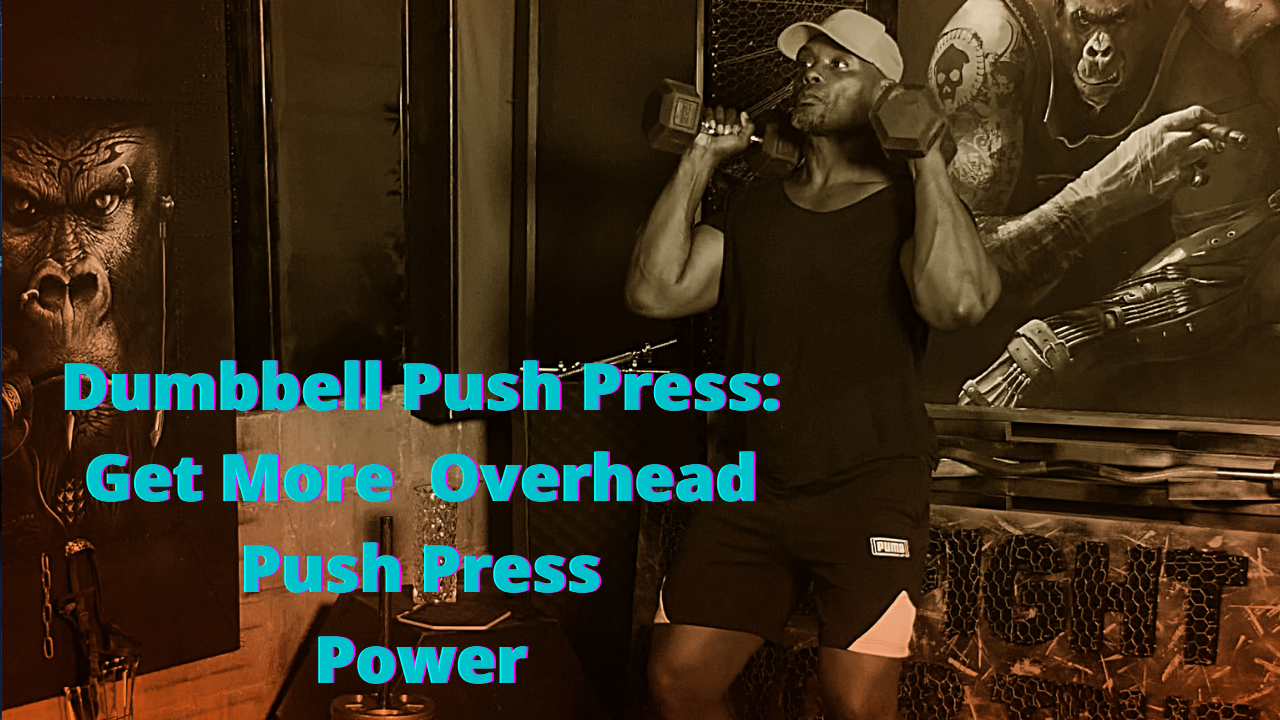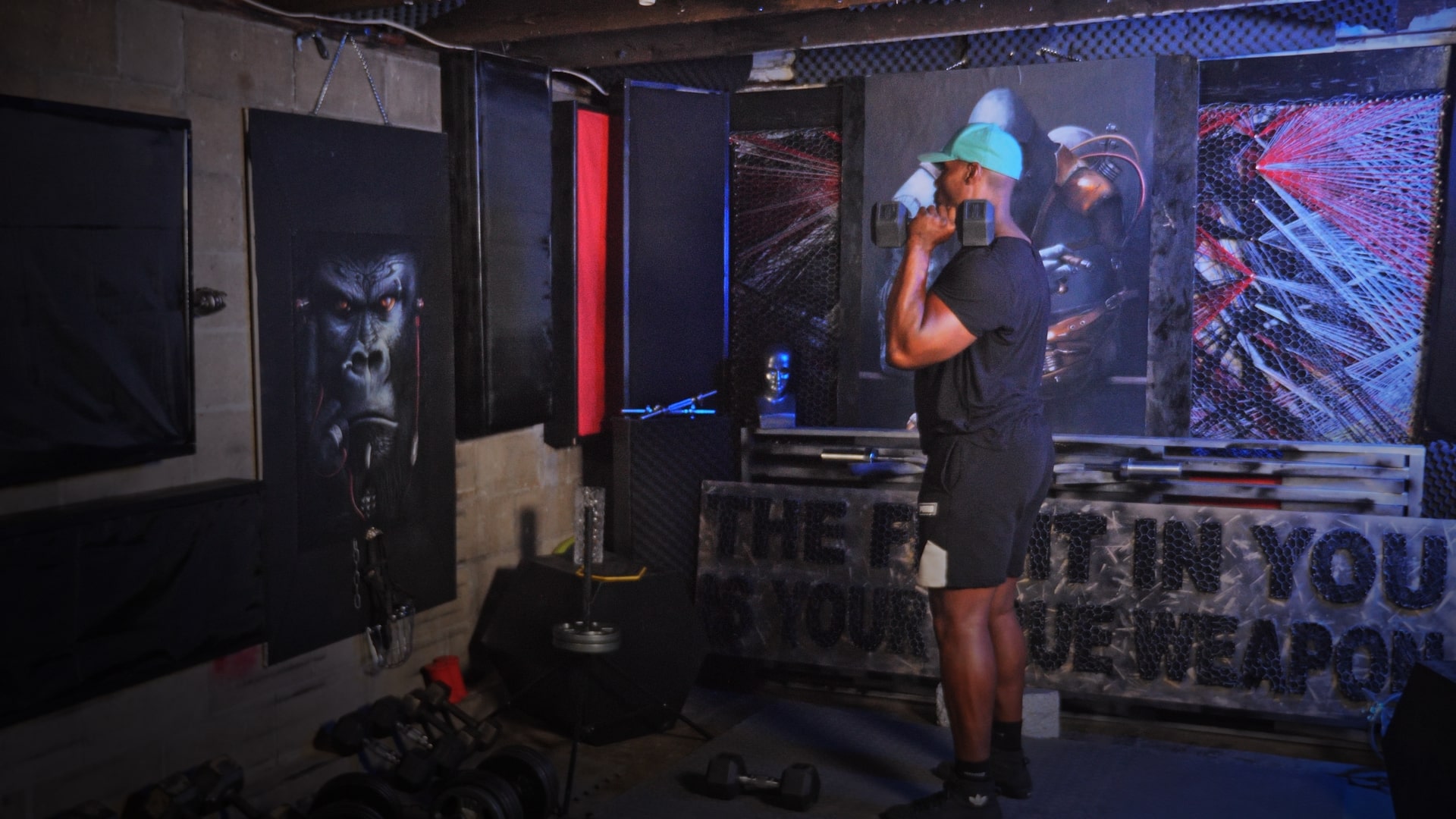Mission Jacked.com
Dumbbell Push Press:
Get More Overhead Push Press Power
Dumbbell Push Press Summary:
A variation of the traditional barbell push press, the DPP is a compound movement with two dumbbells pressed overhead using momentum. This momentum comes from the muscles of the lower body. Made famous at the CrossFit games, other variations differ slightly but allow you to alternate how much power you generate from the legs, but imitate the same movement pattern.
Scroll Down To Continue Reading This Article
Related Articles:
DB RDL
Dumbbell Clean and Press Your Way To A Stronger and Fitter Physique
Dumbbell Deadlift: Build Muscle With Dumbbells & These 5 Variations.
Dumbbell Squats: 4 Unusual Variations To Beef Up Your Quads & Strengthen Your Knees
Continue Reading This Article Below
Push Press Your Way to Bigger Gains:
If you want the biggest bang for your buck, add the Dumbbell Push Press exercise (DPP) to your shoulder workouts. If done consistently over a couple of cycles, you can net impressive gains in size and power.
More than Just an Overhead Press:
While Barbell Squats and deadlifts are seen as impressive “bang for your buck” movements because they combine multiple muscle groups, this Dumbbell Push is no slouch and offers advantages. Even though the Barbell Squat and deadlift are monster exercises, they can be hard to master and tough on the joints. On the flip side, the push-press is a much safer compound movement that is easier on the joints and easier to master. It's a great exercise for building and conditioning the body and should be used by intermediate and advanced lifters.
Who Am I?
 Psymon H.
Psymon H.Hi, I'm Psymon H, creator of Mission Jacked. I've been using this exercise for some time to improve my overall conditioning and supplement exercises when I want to change things up or wish to condense my workouts. I've also found the push press to be a great cycle on/off exercise that naturally gets you ready to progress onto Dumbbell Thrusters and eventually the Dumbbell Clean and Press. After completing a cycle's worth of each exercise, I'm naturally stronger when I return to conventional pressing movements.
How to Do a Dumbbell Push Press:
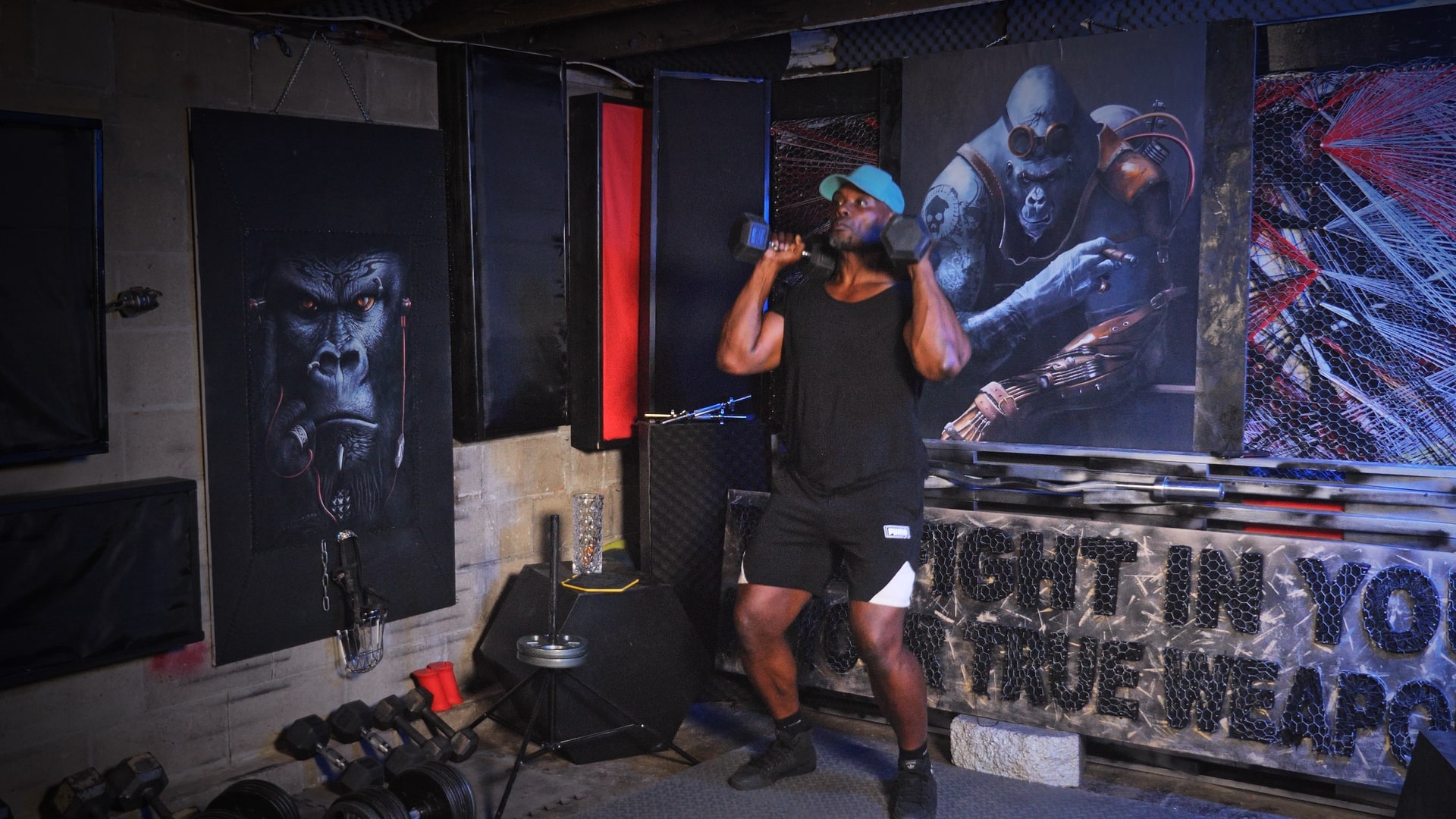 Position 2
Position 2 End Position
End PositionThis exercise is relatively straightforward, but if this is your first time, please take your time and start with lighter weights until you get your bearings.
In The Interest of Health and Safety:

In the interest of health and safety, always start with a warm-up before undergoing any heavy work. This can be done by including shoulder mobility work with light bands. For Glutes and hips, a good place to start is by doing some lying down on each side and performing two sets of 10 leg raises. As for Quads and Hamstrings, do 2 sets of 10 repetitions of Air Squats into Good Mornings. Also, perform a few light sets of presses to get the blood moving around the joints.
Items Needed: One pair of dumbbells
 End Position
End PositionCue 1: Stand with your feet set hip-width apart.
Cue 2: Grip your weights and rest one end of the dumbbell on your shoulders, making sure that you use a neutral grip (palms facing each other.)
Cue 3: Brace your core, keep a high chest and a straight back.
Cue 4: To build momentum and leg drive without hinging at the hips, lower down no further than the quarter-squat position by flexing your hips and bending at the knee. Ensure that your spine, pelvis, and head are in-line. Practice keeping your torso as straight and upright as possible.
Cue 5: Explosively drive through your heels and extend at the hips and knees into the standing position while simultaneously pushing through from your deltoids and Triceps to press the weights over your head. You are generating most of the power for the press through your quick leg drive as opposed to having a strong press.
Cue 6: So your shoulder undertakes more of the stress, slowly and under control, lower the weights to the starting position and immediately drop the hips to start the drive phase for the next repetition.
It’s essential to keep your spine safe and stable by maintaining a tight core.
Exercise Bullet-Points:
• Have feet hip-width apart
• Weights rest on your shoulders at the beginning of the movement
• Have Your elbows in front of the body slightly
• Let your torso dip straight down
• Legs and hips extend and then press
• Heels down until legs and hips extend
• Weights move over the center of the foot
• Complete at the full knee, arm, and hip extension.
DB RDL Exercise
Single-Arm Push Press Work:
 Position 2
Position 2 End Position
End PositionAnother CrossFit special push press shoulder exercise you can perform with one arm at a time instead of doing the traditional push press. By doing so, you are presenting an extra challenge for your stability and core muscles to keep you upright. Another thing you may encounter is the fact that you have one side stronger than the other. In such cases, always start with your weakest side first. You can also alternate between the single and the traditional DPP version.
Items Needed: One Dumbbell:
 End Position
End PositionCue 1: Stand with your feet set hip-width apart.
Cue 2: Grip the single weight and have it so one end rests on your shoulder. Use a neutral grip (palm facing in.) Use the other arm as a balance tool by having it extend out to the side.
Cue 3: Have a high chest, brace your core, and keep a straight back.
Cue 4: To help build momentum and leg drive without hinging at the hips, lower no further than the quarter-squat position by flexing your hips and bending at the knee. Ensure that your spine, pelvis, and head are in-line. Practice keeping your torso as straight and upright as possible.
Cue 5: Explosively drive through your heels and extend at the hips and knees into the standing position while simultaneously pushing the weight up over your head using your deltoids and Triceps. Most of the power comes from a quick and explosive leg drive.
Cue 6: So your shoulder undertakes more of the stress, slowly and under control, lower the weight to the starting position and immediately drop the hips to start the drive phase for the next repetition.
You keep your spine safe and stable by keeping a tight core.
More Push Press Shoulder Variations:
Here is some push press work and variations you can cycle and exchange for the DPP to keep your workouts fresh.
The Landmine Push Press Stand:
 Mid Position
Mid Position End Position
End PositionWith this push press stand variation, one end of the barbell is anchored while plates are loaded on the other end. You can perform using a single arm or double arm grip. While relying on less momentum from the Quads, Hamstrings, and Glutes, It will require a healthy portion of core stability.
Kettlebell Push Press:
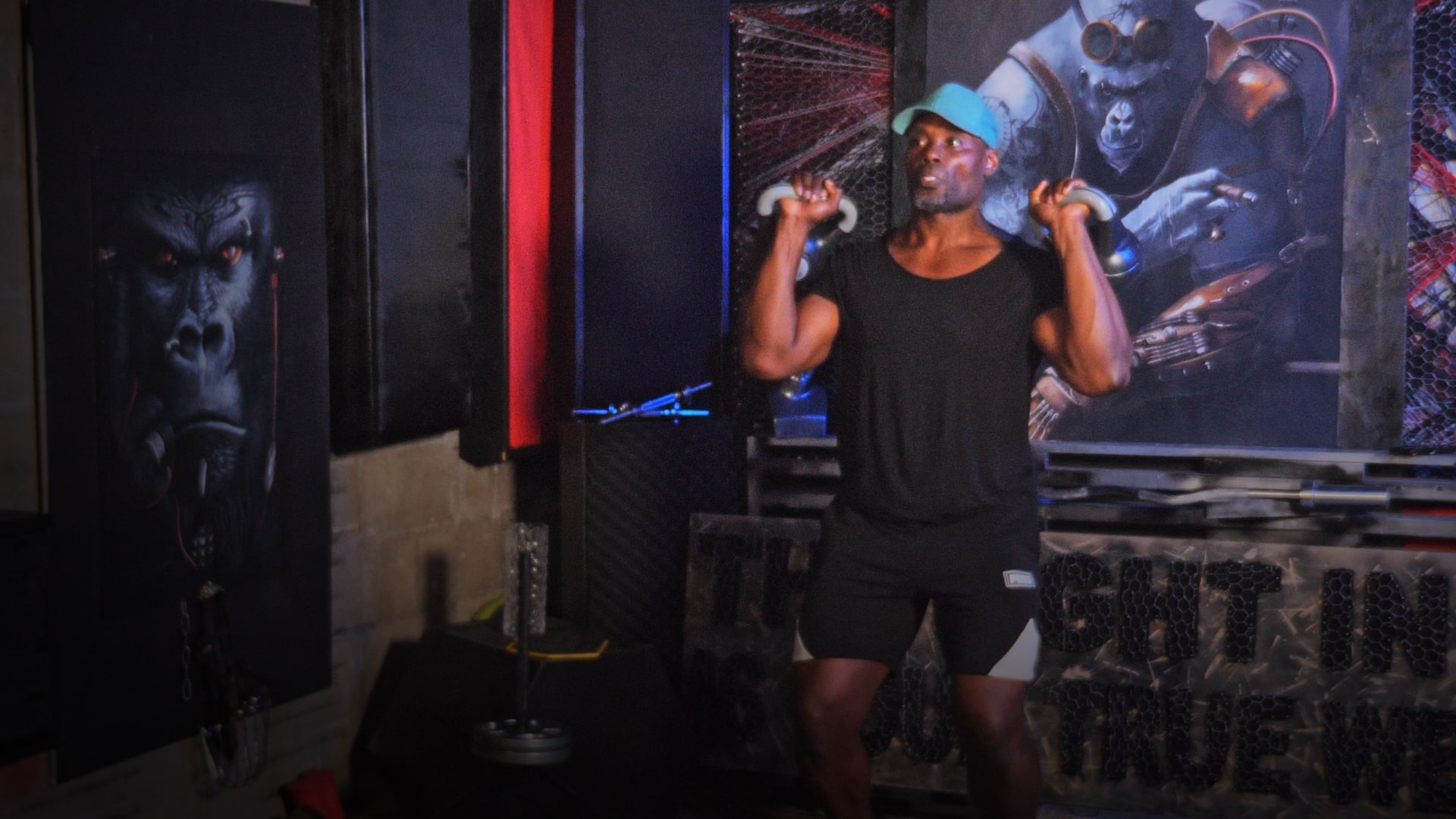 Mid Position
Mid Position End Position
End PositionSimilar to the DPP, this variation uses two Kettlebells for resistance. You can even perform this with just one Kettlebell.
Single-Arm Kettlebell Push Press

Med-Ball Push Press Work:
You can also mimic the DPP push-press action using a med-ball. This is also known as a "Wall Ball Shot." Similar to the Dumbbell Push Press, it too involves power and drive from the Quads, Hamstrings, and Glutes, while using a pressing motion. There are also a few things that make this variation different from some of the others. First, as the ball starts at chest height and does not rest on your delts, your arms are continually working to support the ball. The second noticeable difference is that to obtain maximum height, the med-ball is only released at the top of the movement.
What Muscles Does The Push Press Work?
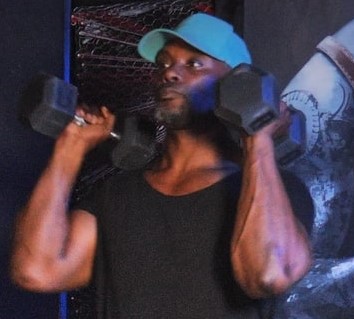
As this dumbbell overhead press uses leg momentum and drive plus hip and knee extension, it works numinous muscles in the upper and lower body. This press benefits muscles in many different ways.
The Upper Body
All Three Deltoid Heads:
When driving the weights overhead, the prime movers are the deltoids. They are accountable for the rotation of the shoulder joint and flexion. When using heavy weights, the stress on the shoulder muscle increases.
The Traps during the Push Press:
During the lift, the Trapezius is responsible for keeping your shoulders from rounding forward and prevents the body from slumping out of a good posture position.
The Triceps during the Press:
The Triceps help lock the elbows out and extend the arms over the head.
The Forearms to Hold the Dumbbells:
The muscles of the forearms are crucial to any dumbbell lift where you have to use your grip.
Upper Chest during the Press:
During The Overhead press, often a muscle group forgotten about is the upper chest that gets its fair share of work.
The Core Works during the Push Press:
The obliques, abs, and spinal erectors work hard to keep the spine safe and in a neutral position. Collectively, the core works harder the heavier the weight becomes.
The Lower Body:
Quad during the Push:
Used to stabilize the knees during the squat portion, the Quads work to extend the knees when you drive up.
Hamstrings during the Push:
Together with the Glutes, the Hamstrings work hard when you come out of the dip position by helping to extend the knees and hips.
The Glutes during the Push Press:
The Glutes do most of the work during the quarter-squat part of the exercise. They generate the horsepower to get the dumbbells overhead while helping to flex your hips during the descent.
Push Press Benefits:
Here are some push press benefits: As mentioned before, this exercise uses multiple muscle groups in both the upper and lower body. While you can’t load the dumbbell version as heavy as the traditional barbell push, there is still improved lower and upper-body power and strength along with better conditioning. The reason is that the stability challenge is much greater than when you have to control two dumbbells and drive them overhead.
Another benefit is that the joints find the natural range of motion that best suits them. This is harder to achieve when fixed in one position using a barbell. The upshot to this is that the dumbbell version becomes a safer and more joint-friendly movement.
Supplementary benefits include an enhanced power and strength carry-over effect on other exercises which can be even more beneficial on Olympic lifts. With core stability and hip-flexor strength, there are some awesome benefits.
The dumbbell offers increased flexibility which is especially helpful if you have limited wrist and deltoid mobility. The DPP enables each arm to move freely and independently.
Overhead Press:
While doing your traditional standing overhead presses, you can add more volume to the set by switching to the dumbbell push press when your deltoid muscles start feeling fatigued and you can no longer complete a strict repetition. This is a great way of edging past the failure point while increasing the intensity.
Push Press Negatives Using Dumbbells:
There aren't many negatives to using dumbbells, but here is one issue you should be aware of.
Getting a Heavy Weight to the Starting Position:
As your strength increases, you'll want to increase your weight. There's always a point that the dumbbell may get too heavy to get it up on the deltoids. A great way to get around this problem is to purchase a pair of dumbbell spotter hooks that you can attach to a barbell resting on a rack.
Thank you for reading our Dumbbell Push Press Article.
More Articles By Mission Jacked
db rdls
dumbbell lat exercises
rogue ab-3 adjustable bench
quad exercises with dumbbells
natty vs enhanced
contralateral split squat
best plates for home gym
rear delt dumbbell fly
rogue wall mounted rack
calf exercise with dumbbells
Mission Jacked L.L.C
Address: 9407 NE Vancouver Mall Dr
STE 104 #1269
Vancouver, WA 98662 USA
Email: mission@missionjacked.com
